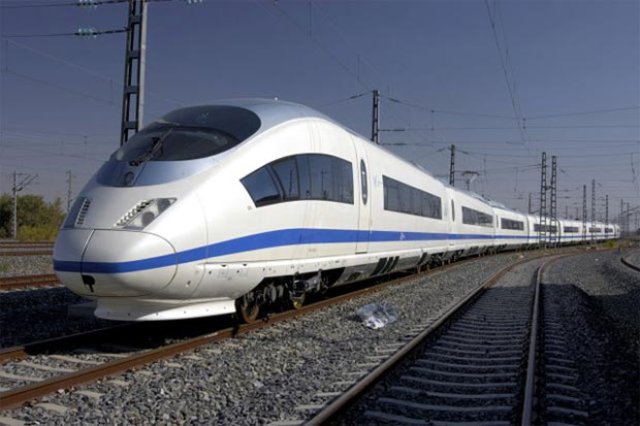
Call it reckless, short-sighted or just “plane stupid”, but the federal government’s decision to press ahead with a second Sydney airport at Badgerys Creek defies logic.
Along with the noise pollution it will inflict on western Sydney, the airport will spawn a huge amount of extra carbon pollution — something we cannot afford in an age of dangerous climate change.
Sydney does not need another airport because there is another, better way. A high-speed train line linking Melbourne, Sydney and Brisbane could reduce air traffic drastically. It could take passengers from Sydney to Canberra, Brisbane or Melbourne in timeframes that are comparable to flying, but with cheaper fares and big cuts in carbon emissions. A new report released by the climate solutions think tank Beyond Zero Emissions (BZE) shows how it could be done.
BZE compiled the report with Melbourne University’s Energy Research Institute and the German Aerospace Centre. It says a high-speed rail link could be up and running by 2025, becoming “a dominant mode of transport within the busy east coast corridor, providing a superior service over flying or driving for a major portion of regional journeys”.
The report says high-speed rail could take passengers from the central business district of Sydney to central Melbourne or Brisbane in less than three hours. This compares well with air travel — taking into consideration the time passengers take checking in, boarding and commuting to and from airports. The full route from Brisbane to Melbourne would take just under six hours.
High-speed trains can run at a maximum of 350 kilometres an hour. The report says with stops and local speed restrictions factored in, the average travel speed would be 255-290 kilometres an hour.
The report includes a draft timetable, which shows remarkable time savings for shorter journeys. A 7.12am high-speed train from Canberra would arrive in Sydney at 8.08am. A 10am service from Melbourne would get to Albury by 11.12am. Passengers could commute from Sydney to Gosford in 23 minutes or arrive in Newcastle in 38 minutes. A passenger on the Gold Coast could be in Brisbane’s CBD just 24 minutes after departure.
To meet passenger demand, the report estimates that a fleet of 87 trains would be needed. At peak times, a high-speed train would leave Sydney every 10 minutes.
The BZE report suggests 21 stations be included along the high-speed rail route. This would mean 60% of Australia’s population would be within 50 kilometres of the high-speed rail network.
The climate benefits of a move to high-speed rail are notable. A previous BZE report — the Zero Carbon Australia Stationary Energy Plan — has already shown how Australia could convert to 100% renewable energy. The High Speed Rail report says the network could be powered with renewable energy, replacing climate-wrecking air travel with zero carbon travel.
It says high-speed rail could cut carbon emissions by 150 million tonnes over 40 years compared with business-as-usual. After five years of operation, the emissions created by building the rail network would be fully offset.
The report says the entire 1799 kilometre network could be finished by 2025, provided work started next year. Similar high-speed rail projects have been built in other countries in 10 years or less.
BZE estimates the high-speed rail network, including rolling stock and project management, would cost $84 billion. But after five years of operation, BZE predicts passenger demand would generate a net profit of $4.6 billion a year — with passenger fares significantly cheaper than economy class airfares. After 40 years, these large profits would mean the $84 billion investment would be repaid.
If it were built, high-speed rail would revolutionise how Australians travel. With 6.9 million passenger movements each year, Sydney-Melbourne is the world’s fifth most busy air route, ranking just below Beijing-Shanghai. BZE says high-speed rail promises to attract 65% of journeys between Melbourne-Sydney and Sydney-Brisbane, while air travel between Sydney and Canberra would become a historical curiosity.
By 2030, the report said 68 million passengers could be travelling by high-speed rail each year, while just 20 million would still travel by air — a fall from 50 million air passengers today.
Report lead author Gerard Drew said on April 3 that the high-speed rail option stacked up on environmental and economic grounds: “For too long the discussion has been misled by concerns of low population density in Australia rendering high-speed rail inappropriate for this country.
“The fact is much of Australia’s population is highly concentrated in the capital cities on the east coast and there is a high degree of travel between them by world standards.
“A high-speed rail system on Australia’s east coast will reduce greenhouse gas emissions from regional travel in this busy corridor by almost 30%. On top of this high-speed rail will continue to provide affordable, convenient and comfortable travel for Australians into the future without the uncertainty of fuel supply and price.”